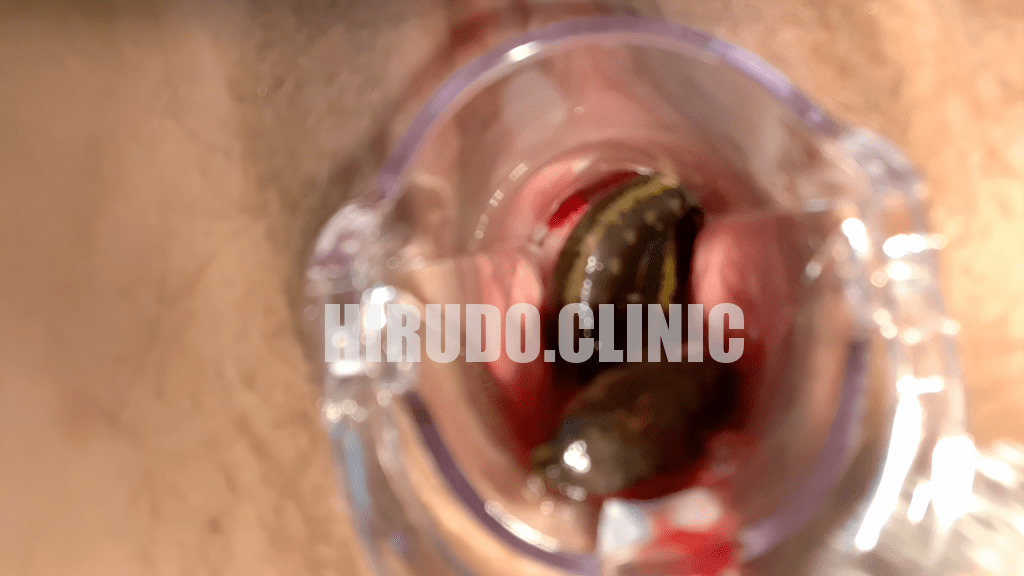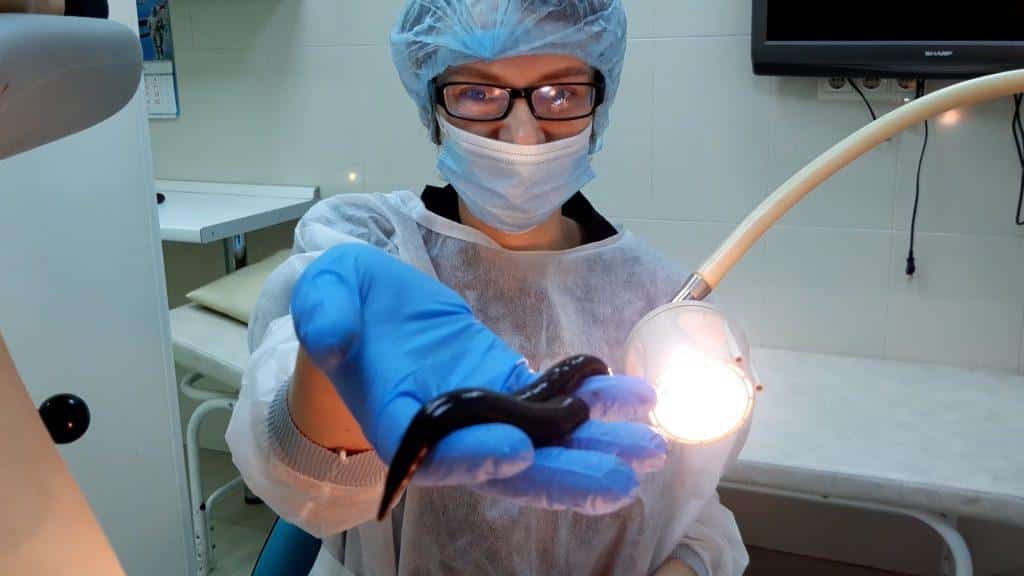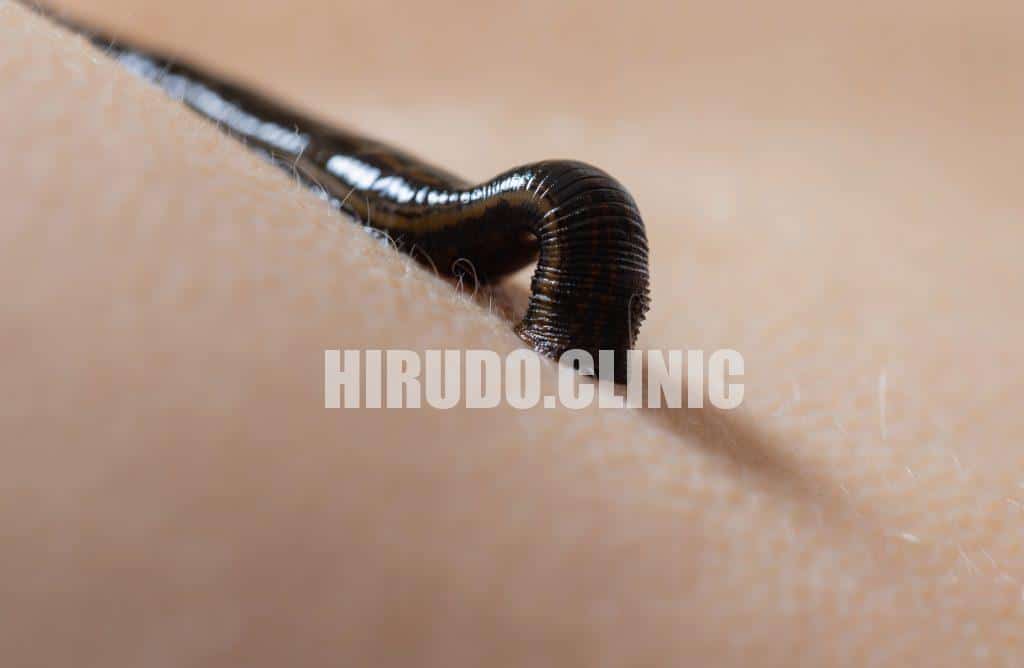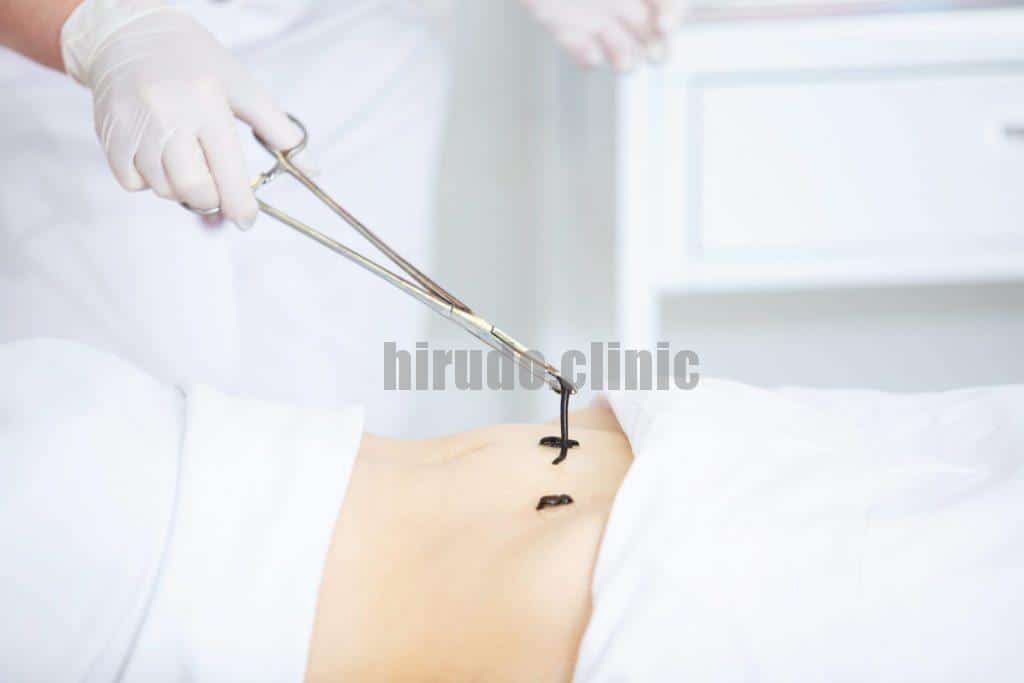

- Symbiotic Bacteria (Aeromonas spp.)
Medicinal leeches (Hirudo medicinalis) naturally harbor Aeromonas bacteria in their gut to help digest blood. If these bacteria enter the bite site, they can multiply and cause infection. - Antibiotic Prophylaxis
To minimize this risk, we sometimes prescribe a single dose of a cephalosporin or fluoroquinolone antibiotic immediately before or after your session. - Strict Sterility Standards
- Certified Breeding: Leeches are raised in licensed hirudariums with regular pathogen screening.
- Disposable Instruments: Speculums, forceps, and gloves are single-use and sterile.
- Safe Disposal: After use, leeches are treated as biohazardous waste, and bite sites are cleaned with antiseptic and dressed with a sterile bandage.
- Post-Treatment Monitoring
For 24–48 hours after your session, we check your temperature and inspect all bite areas. If you notice redness, swelling, or discharge, we’ll provide prompt follow-up care.
By adhering to these measures, we keep the risk of infectious complications to an absolute minimum—ensuring your vaginal leech therapy is both effective and safe.
👉 Subscribe to our video channel for detailed guides and expert insights.

- Individual variability. Everyone’s skin and mucosal microbiota differ, so the risk can vary from person to person.
- High-risk groups. Patients with weakened immunity, diabetes, or chronic vascular conditions gain the greatest benefit from prophylaxis.
- Minimal intervention. One antibiotic dose carries almost no side effects, yet adds an extra layer of protection for those moments when the body’s defenses might not respond quickly enough.
In the end, even if your past sessions went perfectly without antibiotics, prophylactic dosing acts as an “insurance policy” against the rare immune lapse that could lead to unwanted complications.
Body’s defence system often handle small, superficial infections without any antibiotic help—here’s how and why:
- Innate Immune Response
- Neutrophils and Macrophages: These white blood cells rush into a fresh wound within minutes to engulf and destroy invading bacteria.
- Inflammation: Redness, warmth, and swelling are signs that blood vessels have dilated and immune cells are pouring in to clear pathogens and debris.
- Adaptive Immunity
- Antibody Production: If the same bacteria are encountered again, your body “remembers” them and responds more swiftly, preventing a second infection.
- Cellular Memory: T-cells learn to recognize and kill specific invaders, keeping future flare-ups at bay.
- Local Factors
- Blood Flow: Good circulation brings oxygen and nutrients (and immune cells) to the bite, accelerating healing and washing away microbes.
- Skin and Mucosal Barriers: Even tiny punctures quickly seal with a fibrin clot, blocking further bacterial entry.
- When Self-Cleaning Is Enough
- Small, clean wounds—like a single leech bite—often see mild redness and a little ooze, then resolve completely in a week.
- Healthy individuals with no chronic diseases (e.g., diabetes) frequently need nothing more than gentle cleaning and a sterile dressing.
- Why We Still Recommend Prophylaxis
- “Insurance Policy”: A single antibiotic dose protects against the rare cases when bacteria slip past these defenses.
- High-Risk Situations: In patients with weakened immunity or larger, multiple bites, that extra layer of protection can prevent a small issue from becoming serious.
Bottom line: Yes—the body can—and often does—clean up Aeromonas on its own. But antibiotic prophylaxis ensures that the very small chance of a persistent infection never gets the upper hand.


